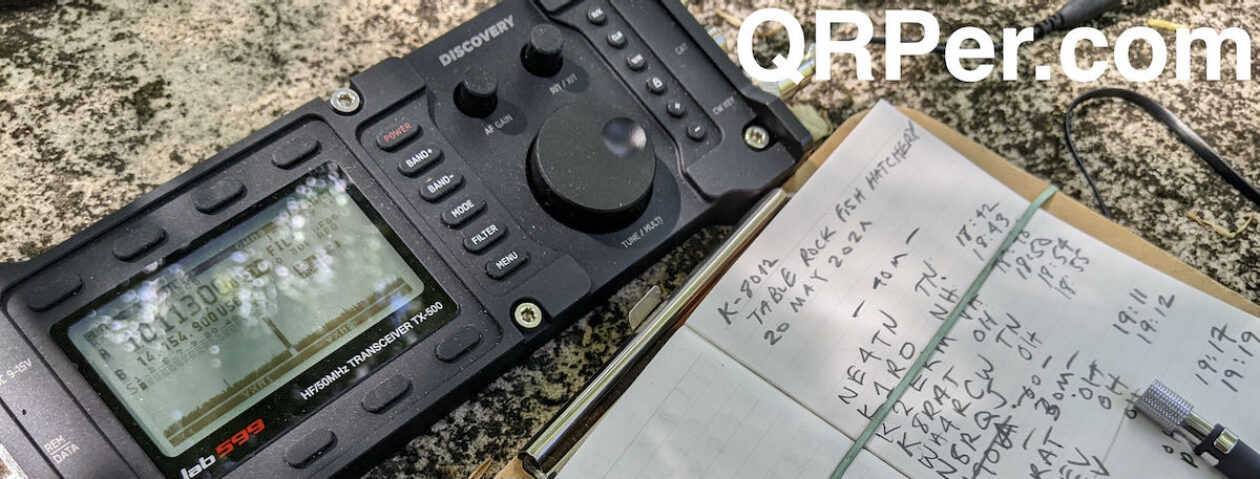Many thanks to Steve (MW0SAW) who shares the following field report:
Portable Ops in 9A Land
by Steve (MW0SAW)
Just back from a family holiday to Croatia and I was lucky enough to be able to take a QRP station with me on my travels. It’s always good to stop and review what you took and how it worked out, else you won’t be able to iterate and improve next time.
My wife and I have always been efficient minimalist travellers and even now with our daughter the traditional continues. And let’s face it, who doesn’t love to get their inner pack geek on when it comes to QRP ham radio and travel!
I’m very lucky to own several QRP radios, Elecraft KX2, FT-818, IC-705, but for minimalist ops they are all a/ too expensive and/or b/ too heavy & bulky. The choice naturally brought me to a CW rig and after some deliberating I chose my Venus SW-3B over my newly constructed QCX mini. The Venus is just more versatile having 3 bands and SSB RX.
So the item I spent weeks torturing myself about prior to the holiday was the antenna. You have to try to imagine from where you will operate. I don’t think you can beat a wire antenna like the K6ARK EFHW however you need trees or a mast, I thought I was most likely to operate from the hotel room balcony. I came to the conclusion, despite the extra bulk, that the Gabil 7350T and Tripod would be my companions.
And how did I get on? Well the first time I setup the station on the balcony the electrical interference was terrible, and I could not hear any signals. So I had to adapt and go for plan B. Which actually turned out to be a stunning spot.
 Operating on a small jetty next to the salt water on the island of Sveti Nikola near the town of Porec in the early mornings, I deployed my station and called CQ. You can see from the RBN that my 5 watt signal was making a good impact, however only had a couple of European stations come back to me from my calls.
Operating on a small jetty next to the salt water on the island of Sveti Nikola near the town of Porec in the early mornings, I deployed my station and called CQ. You can see from the RBN that my 5 watt signal was making a good impact, however only had a couple of European stations come back to me from my calls.
 I decided to switch to hunt and pounce mode, and I was amazed to work several USA, VK and ZL stations over a few days. It’s such a great feeling to work DX with such a modest setup. The icing on the cake for an already special family holiday. I think you will agree such a beautiful place.
I decided to switch to hunt and pounce mode, and I was amazed to work several USA, VK and ZL stations over a few days. It’s such a great feeling to work DX with such a modest setup. The icing on the cake for an already special family holiday. I think you will agree such a beautiful place.
So overall I was very happy with my station choices.
Kit list:
(Note: Note that Amazon links are affiliate and support QRPer.com)
- Venus SW-3B transceiver
- Gabil 7350T antenna
- Gabil GRA-ULT01 tripod
- Talentcell 12V 3000mAh battery pack
- Wonderwand tunable counterpoise
- Maxpedition Fatty Pouch
- Maxpedition Mini Pouch
- Radio Adventure gear paddle
- Earbuds (unbranded)
- Elecraft T1 ATU (used in passthrough mode just for SWR indication)
- Rite in the rain all weather notepad
- Sotabeams RG174 BNC patch cables.
Until my next QRP adventure.
Best 73
Steve
9A/M0SAW (MW0SAW)
UPDATE:
I didn’t mention it in my report (above) as he hadn’t replied to my email, but I did work Peter Parker VK3YE (he has a good YouTube channel). I’m in his video about 10mins 45seconds in:
































